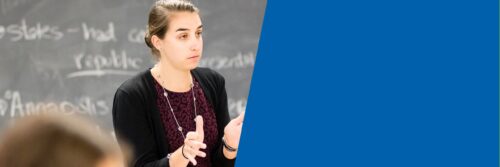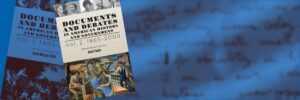
Meet Our Teacher Partners: Lindsay Peterson
At Teaching American History, we focus on telling America’s story through historical documents because history functions for a nation as memory does for an individual. Without memory, an individual or a nation has no identity, and ultimately, no existence. Our teacher partners are the nation’s memory-keepers, passing on our national identity to the next generation as they help students develop the knowledge, skills, and virtues of self-governing citizens. They do this by engaging their students in reflection on and discussion about the documents and debates of America’s past in ways that connect the past to the present.
We are privileged to work with teachers of American history, government and civics from every corner of our nation, believing they do the most important work in America. In this occasional blog series, we’d like to introduce you to them, giving you a peek into their classrooms and the ways they use the documents and resources we provide, both to honor the work they are doing, and to inspire you as you tackle the same essential challenge of educating young citizens.
Centering Education Around Community, Even
Lindsay Peterson teaches at at Millbrook School, a private college preparatory boarding school founded during the Great Depression by Edward Pulling. Millbrook strives to be “progressively conservative” while putting community at the center of its educational program. Each of the approximately 300 students plays a role in campus upkeep, from recycling to gardening to caring for animals at the school’s AZA-accredited zoo, a local community attraction. Students also contribute community service to projects off-campus. “Our school’s motto is ‘Non Sibi Sed Cunctis,’ meaning ‘not for oneself but for all,’” Peterson says. “We work to maintain an environment in which, as we say, ‘all the students are needed and known.’”
When COVID-19 required a campus closure and shift to online learning, Peterson and her colleagues had to work to stay in close relationship with distant students. Students’ access to reliable wi-fi presented a problem in some cases. The larger challenge was upholding shared commitments and purposes when usual activities were suspended.
Learn more about Lindsay’s experience in the Master of American History and Government (MAHG) program and how she uses primary sources to build relationships with her students, and between her students and the nation’s past.



